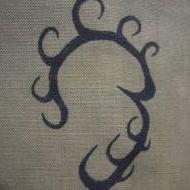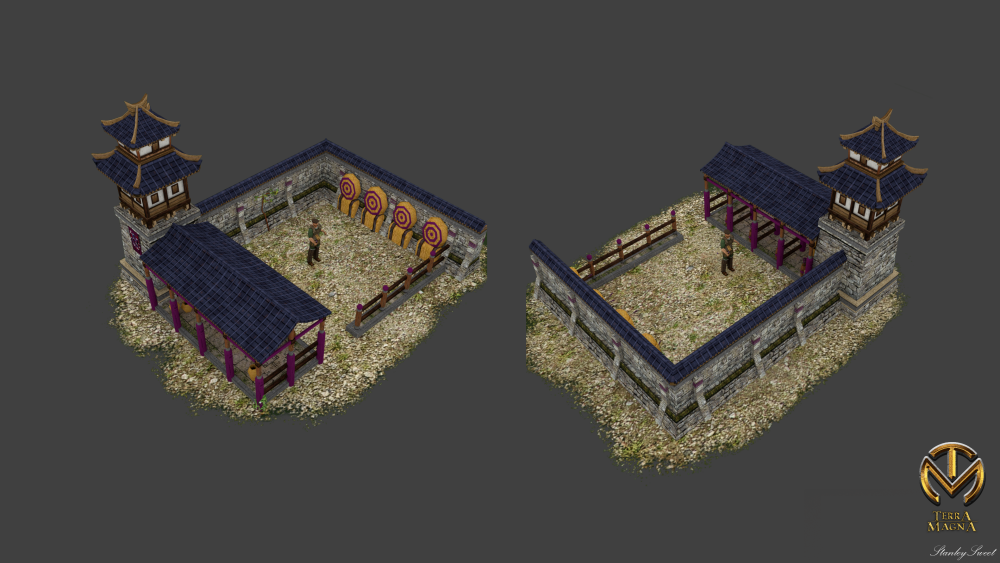Leaderboard
Popular Content
Showing content with the highest reputation on 2018-09-24 in all areas
-
I didn't say Mauryan fortifications, did I? (although even they were built with multiple moats) I don't know anything about the specifics about the design of perishable wooden doors on the gates of 2000+ year old fortifications... God knows I'm not looking at Viking gate designs for inspiration... I'm looking at Indian gates of later times to extrapolate what earlier Indian gates may have looked like. This is a necessary step if you're going to feature things like doors in a game representing 2000+ year old civs. Or we could just start scrapping everything that doesn't have a primary period reference, like 90% of the Carthaginian civ and about 50% of everything else. Also, we do actually have period Maurya references about elephants assaulting fortifications. The Arthashastra mentions something called nagarayanam, the art of assailing forts and cities with elephants.... It is clear from all three of those references that elephants of the attacking armies advanced up to the actual fortifications breaking through the earthworks in the third example... Also, please allow me to quote myself from the previous page on this very thread: So as you can see, I'm not arguing that elephants are siege-equipment, or that it should be their primary purpose. BUT, the idea that elephants have any problem with destroying buildings is 100% ridiculous. As I said, a fortified wall might be a little much, but what do you think most ancient structures were built from anyway? I'll give you a hint, it's like 90% clay/mud/brick/wood/straw... As I said before, Asian elephants can way more than 5 tons. Their hide is so thick it takes specialized rifles to shoot them. Their tusks, without blood vessels, are way denser than bone, and are actually enlarged teeth, embedded 1/3 into their skull. Ivory is a natural "high strength nano composite". I mean, they use it to fight other 5 ton elephants... I'd like to emphasize (again) that elephants weren't primarily used as siege-equipment, but removing this very soft abstraction from the game (not really even an abstraction, more like a rarity), whilst swords and spears and even arrows can take down structures, is utterly ridiculous in my opinion. In addition to that, I don't even see the problem with elephants. They're super vulnerable as it is. An elephant sent to attack a garrisoned fortress in-game, simply dies... In addition, they are often too unwieldy to use effectively on the battlefield. I'm just going to end this post with angry elephants trashing stuff so you people will grow some respect for the destructive powers of the mighty elephant I'll end with a picture I took myself of some African elephants4 points
-
3 points
-
Yes, you're right... It's not so much advantageous for Carthaginians, may be it wouldn't be a problem if we add a feature that counts the number of Civic Centers and according to it gives the player an opportunity to have more than 2 embassies. Like, if the anonymous player has 2 Civic Center then he can build 1 or 2 more additional embassies.(i.e. for each 1 or 2 Civic Centers he/she can build 1 additional embassy). I also consider the same thing for Kushites, as they also have embassy. On the other hand, according to the link---https://historum.com/threads/military-equipment-and-the-organization-of-the-army-in-mauryan-india.40710/ It also clearly states that after defeating Seleucus I Nicator, Mauryan army also start hiring Thracian petlast and superior Dravidian mercenary warriors. In fact, Herodotus also mistook Dravidians as Eastern Ethiopians (or probably described it in his own way). And at last, they also recruit tribals in exchange of gold or land as mercenary skrimisher. So, it is obvious that skrimishers are not forbidden class in Mauryan warfare. “The division of the army into the four arms, Kautilya also divides the army into five different categories, not based on troop type, but on the nature of the warriors serving in the respective category. These categories are as follows: hereditary army, hired army, guild army, allied army, and the army of wild tribes (Arth. 7.7). The hereditary army was probably those that belonged to the Kshatriya caste, i.e. warriors (Rapson 1955), and would probably have constituted the majority of the Mauryan army, while hired troops are, obviously, mercenaries. The guild army is somewhat more complicated to analyse. Different authors have different interpretations of these, and while some argue that they were members of various trade guilds and corporations, who were bound to serve in times of need (Majumdar 1955), others suggest that there may have been warrior-guilds made up of professional soldiers who were contracted by the state to fight in campaigns (Rapson 1955). The latter alternative seems rather too similar to the mercenaries to have been considered a distinct type of warrior by Kautilya, but it is still a possibility. Allied armies constitute forces that allied kings and vassals supply. These forces would often be lent by allied kings, who found it in their interest to help fight a common enemy, but also forces that local Rajas would send to the Maharajadhiraja. They would also consist of Kshatriyas, just like ordinary hereditary forces (Rapson 1955). Finally, we have the wild forest tribes. These would most likely have acted as skirmishers that screened the main army in battle (Rapson 155). These forces consisted of wild tribes that lived in forests and mountains within the kingdom’s domains. What the equipment of such warriors would have been is not known, but an idea of what it might have been like can perhaps be derived from Herodotos. The so called “Eastern Ethiopians”, that Herodotos lists among the different peoples of Ḫšayāršā's army have sometimes been interpreted as being native Indian Dravidan warriors (Rawlinson 1971). This theory is further supported by the fact that in ancient times, India and Ethiopia were often believed to be one coherent landmass, and that Herodotos mentions that the Eastern Ethiopians were placed next to the Indians in the battle array. They are described as being dressed and equipped similarly to the Indians, but they wore the hide from a horse’s head as a helmet, and used shields made out of the hide of a crane. These, then, are the various forces that, according to Kautilya, an army could be made out of. Regarding the organisation, this has already been discussed, so I will just go through this very briefly. The army would often be commanded by the emperor, but the administration was overseen by an official of ministerial dignity, called the Senapati. According to Megasthenes, the Senapati had below him a war office consisting of six boards that each had a certain area of responsibility (Majumdar 1955). The first was for the navy, the second for logistics, and the following four for each of the four arms of the army: infantry, cavalry, chariots and elephants. Thus, the Mauryan Empire had an efficient administrative system for their armed forces, which enabled them to keep armies of unusually large sizes whilst being able to manage and command them efficiently.” Primary sources: (Unfortunately, the amount of Indian primary sources is cetainly lacking when taken to that of Greeks so more Greeks sources were included). Aelian: De Natura Animalium Arrianos: Anabasis Alexandri. Arrianos: Indika. Herodotos: Historiai. Kautilya: Arthashastra Megasthenes: Indika (fragments). Strabon: Geographia Secondary sources: Bhardwaj, H.C. (1978). Aspects of Ancient Indian technology. Boesche, R. (2003). The First Great Political Realist. Majumdar, B.K. (1955). The Military System in Ancient India. Rapson, E. (ed). (1955). Cambridge History of India(CHI). Singh, S.D. (1965). Ancient Indian Warfare with Special Reference to the Vedic Age. Keay, J. (2000). India – A History. Egerton, W.E. (2002). Indian and Oriental Arms and Armour. Chakrabarti, D.K. (1976). “Rajagriha: An Early Historic Site in East India”, World Archeaology, 7(3). From Europa Barbarorum. (It's a off topic discussion, so please allow me at least that much space for such a broad discussion, as it comes into my mind after seeing another site about influences of Mauryan heroes)2 points
-
It is at least as historically accurate as destroying fortifications with a spear or a sword.2 points
-
Hey guys! We're moving along great for the tournament! The next round matchups will be posted below I have already sent out messages detailing your matches so be sure to check those out. 8 - Zolrolt vs. BaskomWelford 11 - Nani vs. Jofursloft 12 - ValihrAnt vs. Winner of 8 14 Feldfeld vs. Hannibal_Barca (Best of 5 Set)2 points
-
Here are the finished files. I also re-processed some of the Greek and Latin voices to remove noise, normalize, and improve the tone a little, so all the languages should be a little more consistent with each other. These belong in the 'audio' folder within a folder called 'voice'. If you want a really quick and dirty way to try out the Persian voices, replace the Latin or Greek .ogg files with the Persian .ogg files, they should overwrite. However, there are a number of lines not used by one language compared to the other, so the result will be messy. If someone wants to go ahead and mod the Persian voices into the game, I already went through the trouble of creating .xml files for all of the lines, matching the other languages as closely as I could. Let me know if there are any issues, although I do not know how much help I can be with implementation beyond this point. voice.zip2 points
-
In 0ad I noticed that there are some heroes that most people don't consider. I propose or to implement better auras for them or maybe make sure that every hero can be recruited only 1 time during the game (an idea that other players like Feldfeld already had). In my opinion these heroes are: - Agis III (Sparta): he is practically an unuseful hero, because he doesn't own an aura and his melee attack is not enough strong. Considering that there are other 2 heroes with a fight aura, it would be good to increase his melee damage, maybe to 50-100, to create a useful hero in the fight (maybe not to send against the enemy army but to send in the enemy base). - Seleucus I "The victor" (Seleucids): his +20% movement speed and attack for war elephants makes him a not very used hero. This because the elephants are not the siege unit that most people that use seleucids train: catapult spam is really better. Why not to extend that aura to every siege weapon? -Xerses I (Persia): why not to extend his +15% gather rate for workers to the whole map? There is Britomartus (gaul hero) that has a +15% global gather rate aura - Pericles (Athenians): why not to extend his +15% build and repair rate for workers to the whole map? He has not enough strong abilities now1 point
-
Let's approach it differently and rephrase some things more sharply: War elephants are highly effective vs buildings in Age of Mythology, therefore 0 A.D.'s war elephants should be battering rams. 0 A.D.'s Mauryas can't construct any siege weapons, therefore 0 A.D.'s war elephants should be battering rams. Some 16th C A.D. Mughal fortresses had anti-elephant spikes on gates, therefore 0 A.D.'s war elephants should be battering rams. Humans can raze stone walls, elephants are much larger and stronger than humans, therefore 0 A.D.'s war elephants should be battering rams. These statements are all improper arguments. In my opinion historical accuracy should matter for 0 A.D. So far I've not seen any evidence war elephants were used to batter down city walls or gates in 0 A.D.'s timeframe (500-1 B.C.), therefore they shouldn't be effectively battering rams in game. Interesting; could you quote or link to a translation? The third, you mean Livy's account of the siege of Capua? Read carefully. The Romans were besieging the city and Hannibal arrived to rescue his Capuan allies. The "earthwork" is not Capua's city walls, it's simply the emergency fortification surrounding the Roman army camp, probably erected within a few days at most. And the text says the elephants arrived at the earthworks, i.e. they had broken through the Roman field army formation and had now reached the camp behind it. This is yet another example where elephants are *not* used as battering rams. None of the sources indicates elephants were actually ordered to attack gates or city walls. Elephants are occassionally mentioned in descriptions of sieges, yes, but so are archers and cavalry, and those are not effectively siege weapons either. Good, we're in agreement on this then. There seems to be a misunderstanding here, I never said elephants shouldn't be able to attack structures. What I'm saying is that war elephants shouldn't be organic battering rams. In 0 A.D. they clearly are: a battering ram inflicts 150 crush damage per 1.5 s, a war elephant 150 crush + 20 hack damage per 1.5 s, so elephants are not very effective vs massed human soldiers, but can actually raze a structure quicker than a ram can. In my opinion this should really change. PS Not exactly Apelles, but still enjoyable to look at:1 point
-
If people are interested in the subject, here a few helpful documents: Jonathan R. W. Prag: Troops and commanders: auxilia externa under the Roman Republic https://www.unipa.it/dipartimenti/cultureesocieta/riviste/hormos/.content/documenti_Hormos_2/J.PragTroops_and_commandersHormos2_2010_101-113.pdf Joëlle Napoli: Rome et le recrutement de mercenaires https://journals.openedition.org/rha/pdf/7055 La République romaine et le mercenariat au temps des Guerres Puniques https://journals.openedition.org/mcv/pdf/3892 Jonathan James McLaughlin: The Transformation of the Roman Auxiliary Soldier in Thought and Practice https://deepblue.lib.umich.edu/bitstream/handle/2027.42/111635/jjmcl_1.pdf?sequence=1&isAllowed=y Salvador Busquets Artigas: Los externa auxilia en el siglo final de la República romana (133-27 a. C.) https://ddd.uab.cat/pub/tesis/2015/hdl_10803_285743/sba1de1.pdf The only clear account during the Punic wars are the Celtiberians used successfully by P. Cornelius Scipion in 211 BC. There is also the Cretans archers during the battle of Trasimene in 217 BC. There is also 2000 Ligurians, Cretans and Numidians called auxilia in 171 BC under Publius Licinius Crassus. But the Treaty of Apamea is an example of political restriction of the mercenaries use in 188 BC.1 point
-
Las campañas aún no han sido implementadas Personalmente no sé cuándo estarán disponibles. Egipto no es una campaña, es más como un escenario.1 point
-
I agree, the fact that he is a trainer hero doesn't countet the absence of an aura: the time to train champs from him is very high. I propose maybe a way to reclute that champion archer units from barracks (more equal). I consider a good hero also Hamilcar Barca: he is very powerful against a civ like ptolemies The main problem of this is that the mercenaries can't be trained from barracks, so it is not so good if we consider we can train mercenaries only from 2 buildings1 point
-
In the future, it is easier to just open the .xml files and see which <sound> files are listed. The game 'asks' the .xml files which sounds to play, so that will show you what is used where. Whether or not the .xml file is actually 'asked' by the game or not is a whole different issue of implementation that needs the input of designers/programmers to resolve, which we should address as well. Due to the haphazard nature of open development, some people don't provide all of the translations or sounds (after all, when many of these translations or recordings were provided, it is very likely there were significant differences in features/design, so they probably didn't have even had the same list we have now!). As a result, even minor changes in design as alpha testing progresses will continually result in certain voice lines being no longer used, or others being added long after the original recordings were done (e.g. capturing buildings, which has no dedicated phrase translated for any language yet- i.e. 'prendam' or 'aedificium prendam' for Latin have not been recorded or even listed). I believe things like missing words or "close enough" fits (which are very common in the current Greek audio) are okay for now until the rate of adding new big features is less. Chances are, in a year or two, there will be 2-3 more phrases added anyway. In my mind, most of the voice recordings we are doing here, even now, are probably just going to be placeholders unless the recording quality is really impressive. Most important I believe is ensuring that we have more up to date dialogue choices and translations available for voice actors so we can get all the phrases we need going forward, and none of the ones that are no longer needed. Much of that discussion needs to take place with the people responsible for designing the game and implementing the references to the .xml files, to re-examine what phrases may be no longer used and what phrases should be added. I think we would need to settle that at least before we can talk about any sort of semi-permanent implementation of voices or lots of tweaks, or else things will just continue to drift farther out between the list and the build. Part of the problem might even be that programmers have been reluctant to utilize the more specific lines because they are not available in all languages, and in some cases, not translated. Thoughts? @dmzerocold As for 'I will Work', there is no 'I will work' used in the other languages as recorded (e.g. 'laborabo'), but there is 'I will work [land/fields]' included in the Latin (agrum colam, lit. "I will cultivate the field"). I have only put 'I will work' there for now in the XML because it was just the closest fit, and whether or not you should consider re-recording is something that needs to be determined by more than any one of us.1 point
-
An unrealistic siege weapons mechanics is just a turn off on any RTS game imo. Like AoE2 the rams are like transport vehicle, seems like they run faster with the music on. The best siege weapons mechanics for me is the Stronghold style. They build and man it. If the operator dies its immobilized, like Sudden Strike game. There’s no point on arguing it’s speed and armor etc etc, they are useful only when the besieged is outnumbered. Then you can mobilize these sieges without much opposition otherwise they can’t just operate alone and beat up a defender. This game can be much better without “ghost” units and structures.1 point
-
1 point
-
Again, there is more... Chandragupta Maurya--- He has practically no aura Again, Elephant based heroes has no need to give them inspired technology aura for garrisoned buildings. It's really seems to be a misnomer or a fake aura for such units. As per my knowledge, only Mauryans, Kushites, Persians have access to elephant stables (in which Mauryans are the only implemented civilization for alpha23). Again, Carthaginian heroes lack a proper useful aura. Only Maharbal has a cavalry attack based aura whereas Roman heroes are quite helpful and give a lot of advantages to the player. As I know, during the journey of Hannibal to Rome, he recruited a lot of mercenary units against Rome that nearly doubled his army. So, the allied attack based aura should be changed to an aura based on less cost for mercenary units (like 15% or 20% less cost for all or atleast some kind of mercenaries). It would be better for the game, history and equality for civ choices.1 point
-
If all melee units have a "melee" attack type that the catapults (and all siege equipment in general) have very little defense against then there is no need for the bonus. Melee cavalry and infantry, albeit to a slightly lesser extent, would be a natural choice against siege equipment.1 point
-
The name of the map might also be helpful we do have a lot of them after all Enjoy the Choice1 point
-
I guess saying "many examples" was an error. But one I can think of is Pyrrhus at Argos (where he was slain by a roof tile thrown by an old woman). Your aggressiveness is unwarranted, since I am with you that elephants being meat battering rams mowing down buildings left and right is not much supported. Just felt reasonable to make them good against wooden gates, but not against many other structures which are often made of brick or stone. However, if we follow @Sundiata's suggestion and give every civ the battering ram (which we bloody well should), the gate bonus I suggested for eles would be unnecessary. Can I suggest this? Every civ's battering ram starts as a simple ram carried by men (like the Xiongnu ram). Then many (there's that enraging word again) civs can upgrade them to Covered Rams with a tech (more armor and HP, a little slower). The game needs more visual upgrades, methinks.1 point
-
Thanks for the replies y'all. I'm still not convinced it'd be a good idea to use elephants to tear down fortifications or that it is historically accurate, even though they can do massive damage when enraged; but I don't have an issue with it being in the game. I agree with @Sundiata however that rams are such a basic technology it should be available for all civs. Glad you like it.1 point
-
If you joined the thread about giving permission to use your contributions you already have darn Stan types faster than I do. Enjoy the Choice1 point
-
@Nescio I had issue on my system, now im downloading DEV version again , i want to test translation / voice on my side if possible , i may need your help.1 point
-
Well, in truth it's not so difficult to counter a mass archer: You can for example send 3-4 catapults to kill them all without lose any unit (and you can keep your army behind the catapults to kill sword incoming) You can make a lot of pikes (40-50) to create a good shield for your ranged units behind (but send them in formation). Elephants are also a good tank unit If you have just slingers or skirmishers (better skirmishers), just go with them as nearer as possible to the archers (it would be perfect to enter their formation), so the archers will die very fast against your skirmishers, even if you will some some when you are trying to reach them It can be also good to send with your army also 3-4 rams (that can kill 1 archer with a simple shot) Send your hero first then use him to dance while you wait your soldiers coming (this is op against a mass archer)1 point
-
I'm going to make some changes to rams and eles in DE based on some of the discussion here. Rams will be rarer and slower. An individual ram approaching your walls should cause you a bit of anxiety, while for the attacker their anxiety comes from using such an expensive unit. The same thing should occur with siege towers, but those are a completely different discussion and need custom code, imho. One thing's for sure: the era of massed rams should and will come to an end.1 point
-
What if we make the movement speed of heroes much slower, that way they can't raid very efficiently, but are still good in combat1 point
-
The only way to be sure that your units will always be fighting and won't try to capture buildings, siege weaponry or just being idle is to put a patrol point (by holding 'P') behind the enemy army or using the attack move Ctrl + Q + Right Click behind enemy army (don't know how good it really is, because it takes too much effort to actually click the buttons, but should be the same as patrol). That way even if no enemies are in the vision range they'll keep moving toward enemy units and attacking the ones in range.1 point
-
In reality, archers, like every ranged or melee unit, are programmed to attack only the organic enemy units in their range. If there are no enemy units they anyway don't try to destroy a building or a siege weapon, but to conquer it. So, the only one way to attack a building or a siege weapon for your archers is to receive that order from you. Maybe the problem is that you expose your archers (a quite weak unit in armor) to catapults/bolt shooters fire or buildings' arrow range.1 point
-
So the relevant file is this one: https://github.com/0ADMods/pre-colonial-mod/blob/master/art/actors/props/units/shields/shield_decoration.xml With the following code: <?xml version="1.0" encoding="utf-8"?> <actor version="0"> <castshadow /> <group> <variant frequency="1" name="Shield Decoration"> <mesh>props/shield/mexica_shield_decoration.dae</mesh> <textures> <texture file="props/shield/shield_decoration.png" name="baseTex" /> </textures> </variant> </group> <material>player_trans.xml</material> </actor> AFAIK actor only supports 1 as version. That's it.1 point
-
1 point


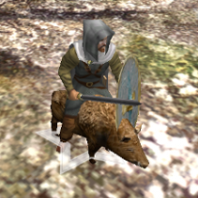

.thumb.jpeg.ff082a55e7c36ac78e97d2ede172716f.jpeg)
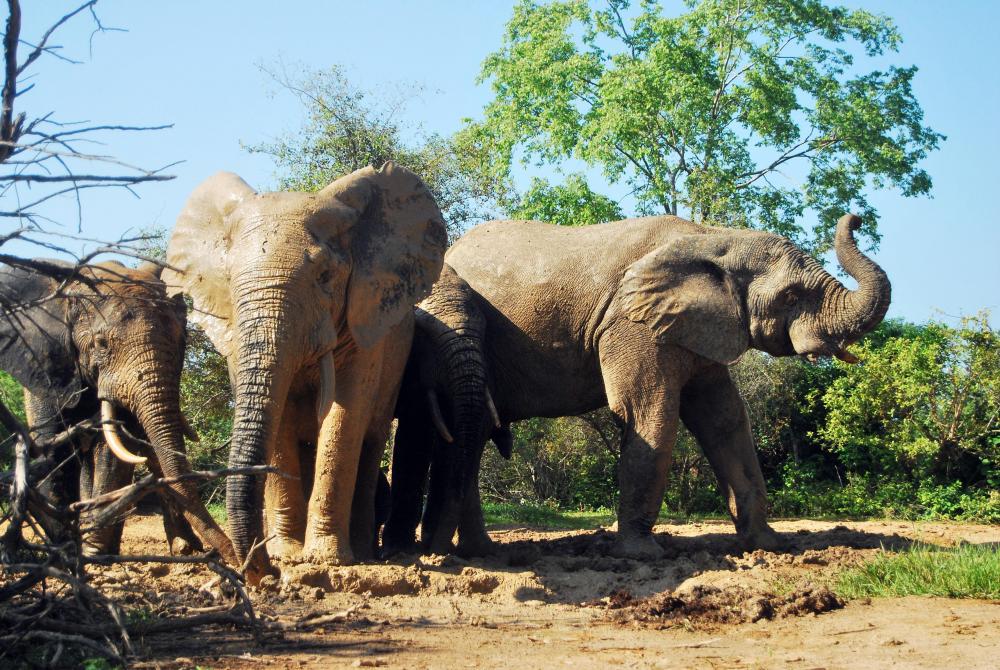
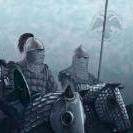
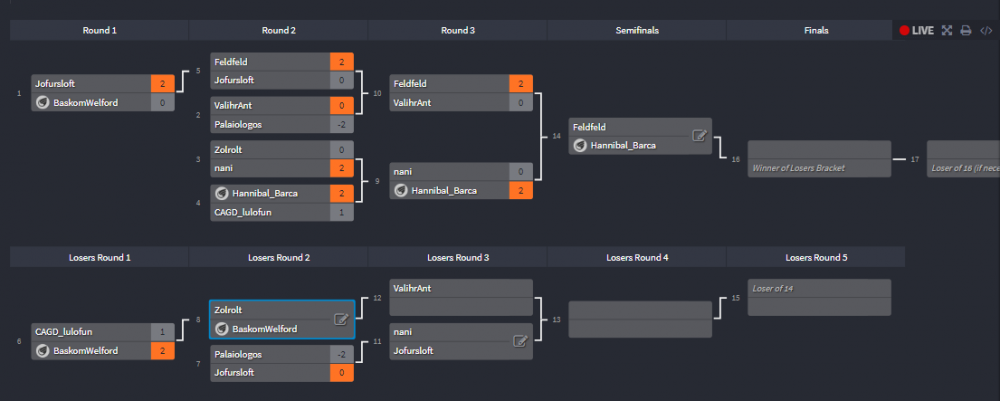

.thumb.jpg.b21ca1d0c15fb56b42c39b25a0a40815.jpg)



